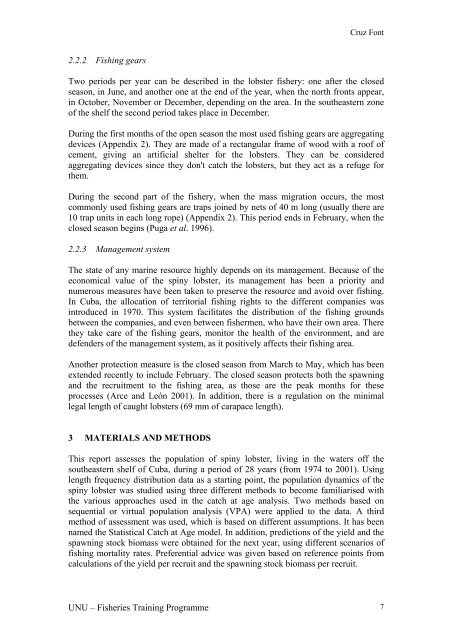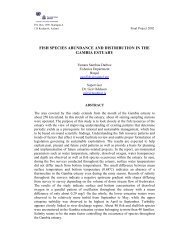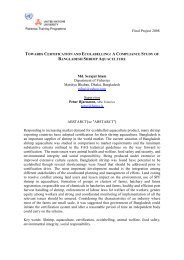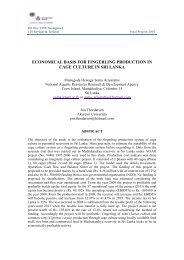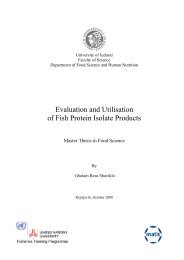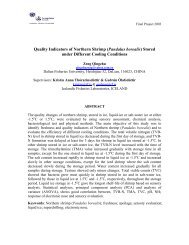STOCK ASSESSMENT OF THE SPINY LOBSTER (Panulirus argus ...
STOCK ASSESSMENT OF THE SPINY LOBSTER (Panulirus argus ...
STOCK ASSESSMENT OF THE SPINY LOBSTER (Panulirus argus ...
You also want an ePaper? Increase the reach of your titles
YUMPU automatically turns print PDFs into web optimized ePapers that Google loves.
Cruz Font2.2.2 Fishing gearsTwo periods per year can be described in the lobster fishery: one after the closedseason, in June, and another one at the end of the year, when the north fronts appear,in October, November or December, depending on the area. In the southeastern zoneof the shelf the second period takes place in December.During the first months of the open season the most used fishing gears are aggregatingdevices (Appendix 2). They are made of a rectangular frame of wood with a roof ofcement, giving an artificial shelter for the lobsters. They can be consideredaggregating devices since they don't catch the lobsters, but they act as a refuge forthem.During the second part of the fishery, when the mass migration occurs, the mostcommonly used fishing gears are traps joined by nets of 40 m long (usually there are10 trap units in each long rope) (Appendix 2). This period ends in February, when theclosed season begins (Puga et al. 1996).2.2.3 Management systemThe state of any marine resource highly depends on its management. Because of theeconomical value of the spiny lobster, its management has been a priority andnumerous measures have been taken to preserve the resource and avoid over fishing.In Cuba, the allocation of territorial fishing rights to the different companies wasintroduced in 1970. This system facilitates the distribution of the fishing groundsbetween the companies, and even between fishermen, who have their own area. Therethey take care of the fishing gears, monitor the health of the environment, and aredefenders of the management system, as it positively affects their fishing area.Another protection measure is the closed season from March to May, which has beenextended recently to include February. The closed season protects both the spawningand the recruitment to the fishing area, as those are the peak months for theseprocesses (Arce and León 2001). In addition, there is a regulation on the minimallegal length of caught lobsters (69 mm of carapace length).3 MATERIALS AND METHODSThis report assesses the population of spiny lobster, living in the waters off thesoutheastern shelf of Cuba, during a period of 28 years (from 1974 to 2001). Usinglength frequency distribution data as a starting point, the population dynamics of thespiny lobster was studied using three different methods to become familiarised withthe various approaches used in the catch at age analysis. Two methods based onsequential or virtual population analysis (VPA) were applied to the data. A thirdmethod of assessment was used, which is based on different assumptions. It has beennamed the Statistical Catch at Age model. In addition, predictions of the yield and thespawning stock biomass were obtained for the next year, using different scenarios offishing mortality rates. Preferential advice was given based on reference points fromcalculations of the yield per recruit and the spawning stock biomass per recruit.UNU – Fisheries Training Programme 7


